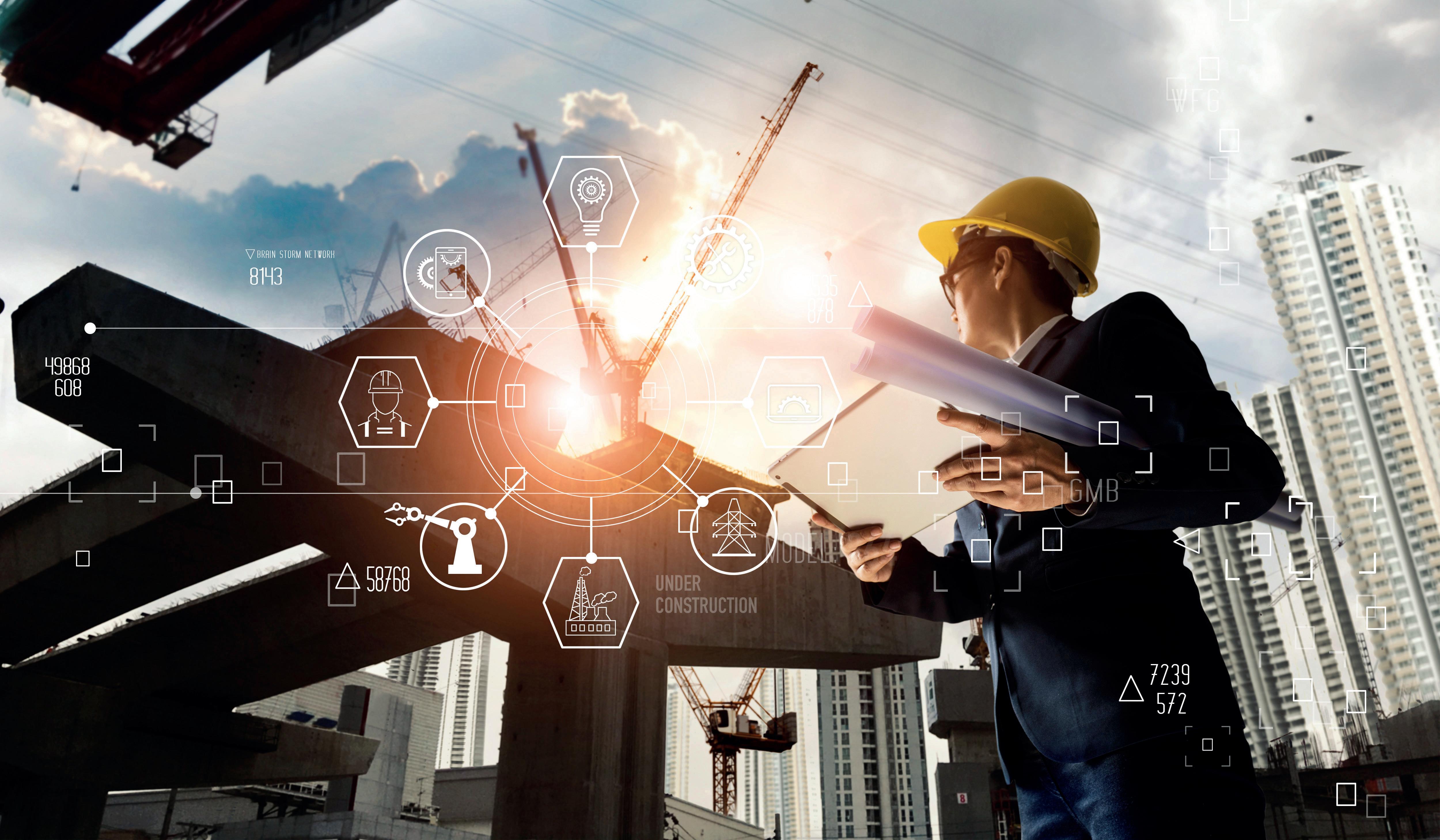
4 minute read
SUSTAINABILITY
Reality check
How AI and Machine Learning will create the sustainable construction industry of the future. By Fabio Ponzio
There are often many moving parts on the construction jobsite. Understanding construction progress, verifying schedules, assessing quality, identifying delays and ensuring safety compliance are essential to keeping a project running smoothly, on time and within budget. Recently, and for good reason, sustainability has been added to the list of demands to which construction projects must adhere.
Additionally, stakeholders expect to have complete visibility of what is happening on-site to be able to address issues, optimize performance and ultimately meet or exceed expectations. Recent advancements in technology, particularly gaining insights from machine learning (ML) and Artificial Intelligence (AI), provide this high level of visibility to make construction much more time-efficient, cost-effective, and sustainable.
Enhancing project management
For real-time documentation of everything that happens on a project site, both on the exterior and interior, owners and contractors can now deploy high-definition time-lapse photography and live video streaming systems. This will provide a comprehensive overview of the progress being made on the construction site, thanks to AI-powered camera technology and ML algorithms.
By combining the latest AI-powered camera technology and ML algorithms, stakeholders can connect to the site from anywhere, at any time and get instant access to up-to-date information about the progress and critical milestones of a project. This could include quality assessments, overall performance and even risk detection and management.

This combination of technology and algorithms not only provides insights into construction work progress, but also possible safety issues. AI can identify which employees on site are not wearing the required protective equipment. Using that data to benchmark safety incidents compared with other construction sites will help make construction sites safer overall.
Maximizing efficiency with AI and ML

AI can track and analyze on-site project activities like machine and equipment movements, as well as digging or concrete pouring. AI analysis detects incidents like pouring concrete during cold weather, missing site activities correlated to adverse weather conditions, safety-related issues and much more, providing insights that can help to optimize a construction project.
Organizations should utilize AI and ML to create a framework for optimizing the number of people, products, and resources required for a job. For instance, data provided by AI will inform whether it would be more efficient to refurbish a structure, or simply rebuild it. This will ensure precious resources are not wasted but it will also save time and money.
Monitor progress
Throughout the entire life cycle of a build, documentation is critical for maintaining visibility of the construction progress. Visual construction progress documentation including still images, video, reality capture, UAV and webcam can be used to provide progressive digital records of ground-up development, shared via a cloud-based platform such as the one Multivista provides.
For example, project teams can update schedules and demonstrate progress to stakeholders. Advanced camera technology can capture both the exterior and interior views of the entire site and make them available to the project team via interactive floor plans. Integration with data captured of real-world objects and environments is used to create accurate point clouds and measurements.
This combination can create a complete record of a site at significant milestones or current conditions and progress to document underground and in-slab utilities, exterior weather-proofing, and mechanical, electrical and plumbing systems during the critical period between inspection and completion. In addition, the use of AI analysis provides insights into construction work progress and possible safety issues.
Eyes in the skies
It is increasingly common for building projects to be planned and monitored from the sky. UAVs are now frequently used for site planning and progress tracking, aerial site surveys, tracking equipment and measuring volumes, QA/QC inspection, and site mapping. Adding aerial data into a single collaborative online platform means it can be accessed alongside terrestrial data so the entire project can be viewed, measured and managed instantly, without having to step on site.
Better construction for a smarter future
To build better construction projects around the world, collaboration is required across remote global departments and dispersed team members, which means barriers to accessing information must be removed. By capturing and sharing measurable data with stakeholders wherever they are, all parties can virtually visit the site and stay connected to the build.
AI and ML technologies enable all project stakeholders and teams to avoid delays and respond to real-time changes with minimal delay, which creates efficiency, cost-effectiveness, improved safety, and sustainability for the entire industry. By developing and deploying reality capture and sharing digital realities, the industry can bring greater focus on building better for smarter, more sustainable, construction jobsites.
Fabio Ponzio is EVP Geosystems, Business Development at Hexagon. Hexagon is a global leader in digital reality solutions, combining sensor, software and autonomous technologies. It is putting data to work to boost efficiency, productivity, quality and safety across industrial, manufacturing, infrastructure, public sector, and mobility applications. Its technologies are shaping production and people-related ecosystems to become increasingly connected and autonomous – ensuring a scalable, sustainable future. Hexagon’s Geosystems division provides a comprehensive portfolio of digital solutions that capture, measure, and visualize the physical world and enable datadriven transformation across industry ecosystems.






